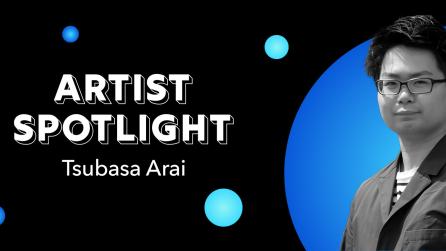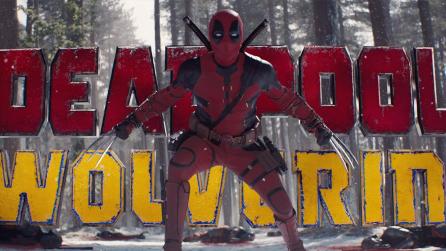Discover the artist behind the Nuke 16.0 splash screen.
Oslo-based VFX artist Einar Martinsen has a passion for designing creatures and environments, and as the talent behind the Nuke 16.0 splash screen imagery, you’ve probably seen his artwork a lot recently.
With a lifelong ambition to work on VFX at Wētā, sparked by The Lord of the Rings films, Einar’s career came full circle when he not only achieved his goal, but also went on to work on Amazon’s Tolkien show, The Lord of the Rings: The Rings of Power.
For our latest Artist Spotlight, we spoke with Einar about his career journey, his design inspirations, and how he created the magical splash screen artwork for our latest release, Nuke 16.0.
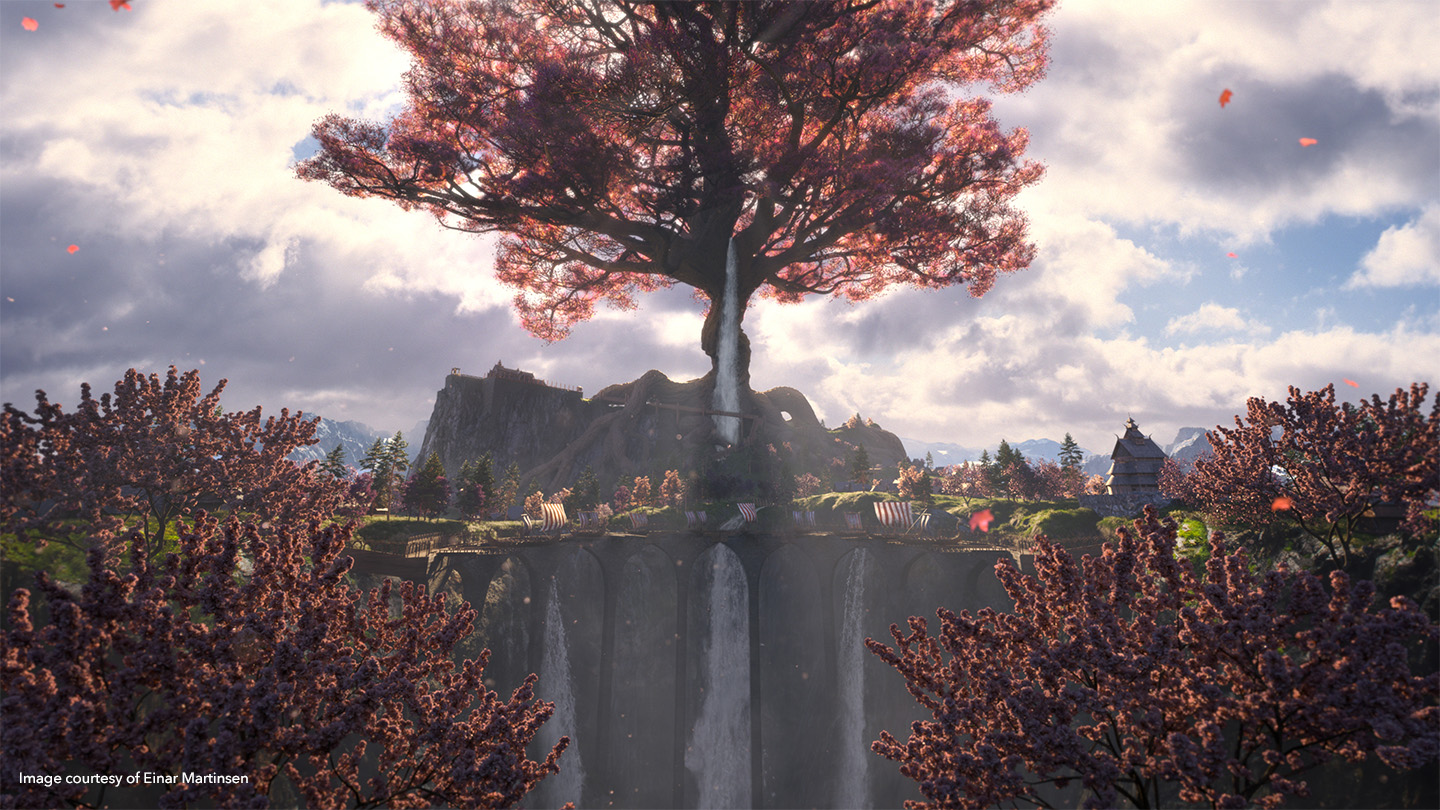
What inspired you to go into VFX?
Peter Jackson’s The Lord of the Rings trilogy are my favorite movies. I watched them when I was young and all the behind-the-scenes footage just blew me away. It was my dream to work at Wētā one day. I didn't think it was going to be possible, as it was such a far-fetched dream from the other side of the world!
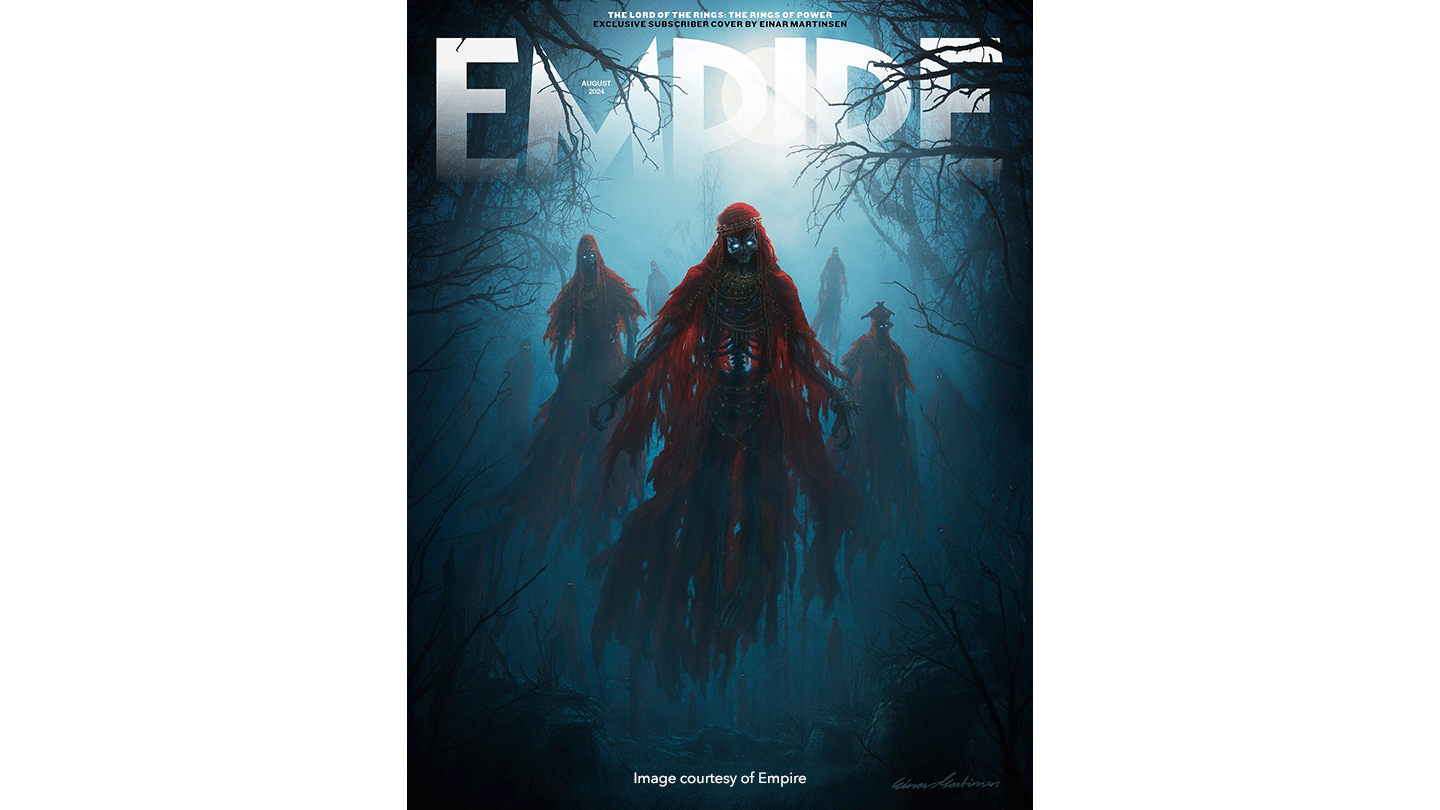
What do you enjoy the most about working in visual effects?
The most exciting thing about working in visual effects is the craftsmanship — it's like creating magic. There’s always been a curve of innovation going right back to the early days of ILM (Industrial Light & Magic), and that allows you to try a lot of different things. The possibilities of what you can come up with as a visual artist are becoming endless. Increasingly, I collaborate with pre-production, so it’s cool to also be part of the process from beginning to end.
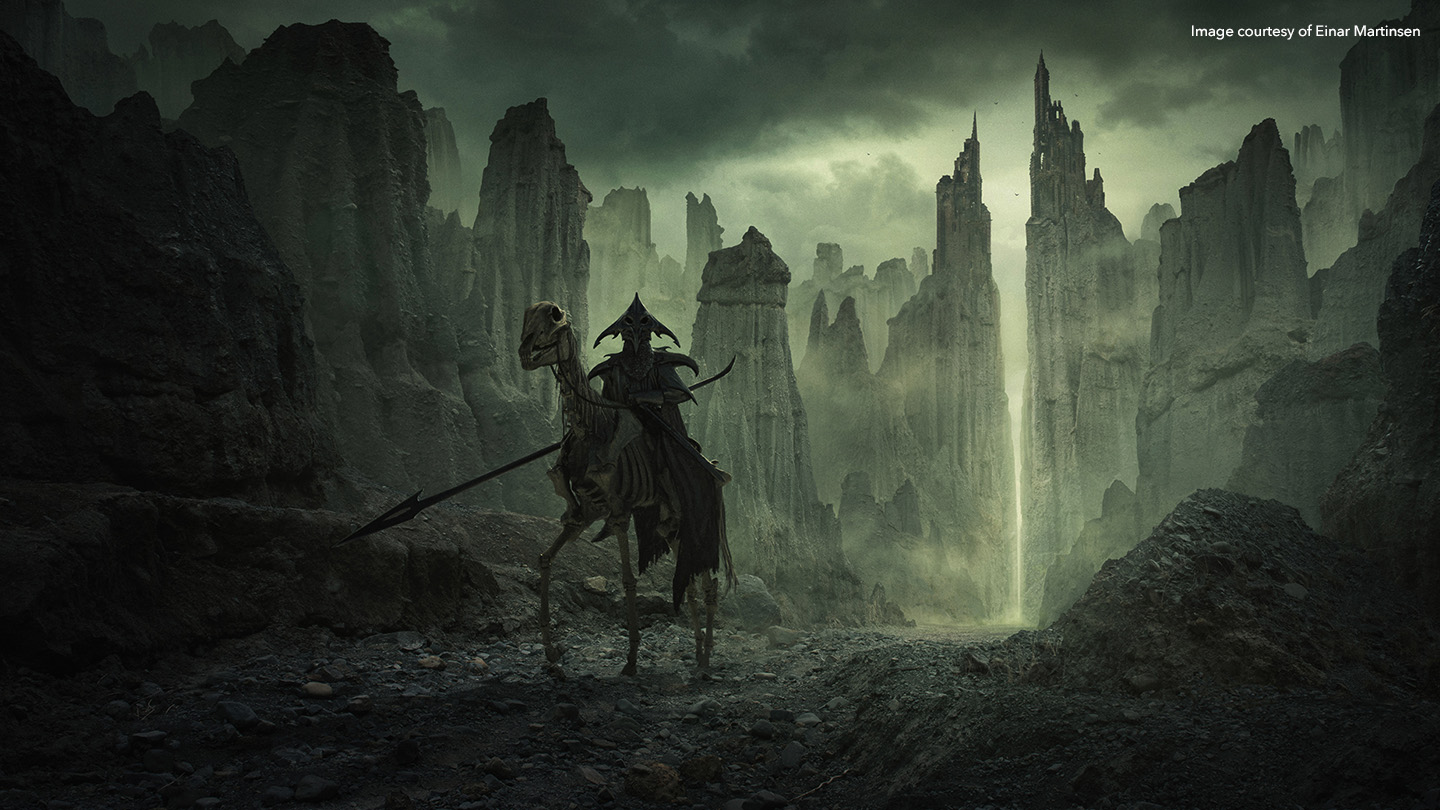
Can you tell us about your current role and your path there?
I’m a freelancer, currently working as a VFX Art Director at Amazon MGM Studios. Previously, I was a Senior Concept Artist, and before that, a Matte Painter. Before my first job at a studio when I was 20, I studied at art school and film school. I then started out as a visual effects generalist in 2010. And that's when I first started using Foundry tools like Nuke.
In 2015, I moved to New Zealand to work at Wētā and stayed there for eight years. Most of that time was with Wētā, where I worked on Avatar: The Way of Water, which was a major career highlight. Then I joined Amazon to work on The Rings of Power. After that, I went to Paramount to work on the Apple TV+ show Time Bandits, where I had the chance to work on location and learn more about the process of film production.
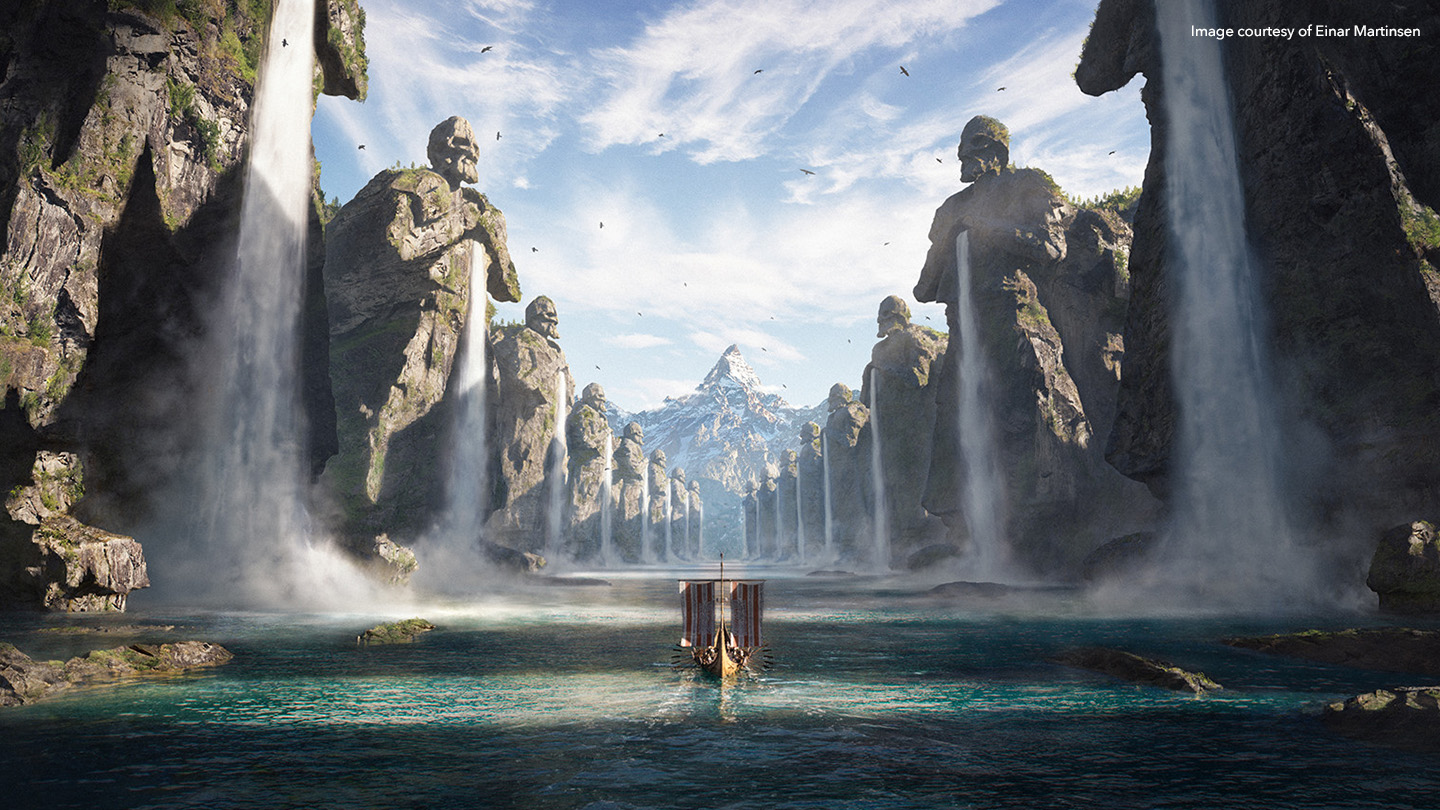
What project/s are you most proud of and why?
I was fortunate enough to work on seasons one and two of The Rings of Power and that’s been the most rewarding for sure. It was super creative, with so many different things to do, and I just love the whole Lord of the Rings property.
Another favorite is the Norwegian Netflix monster movie Troll. I was really lucky to work with the director from the early stages, developing the concept art, and also helping with the visual effects. I got to design the main monster and, as a bonus, I also got to design a huge skull, several meters across, that was printed and put on top of a car used in the movie. It was surreal to have that experience and really great to see it all come together on screen.
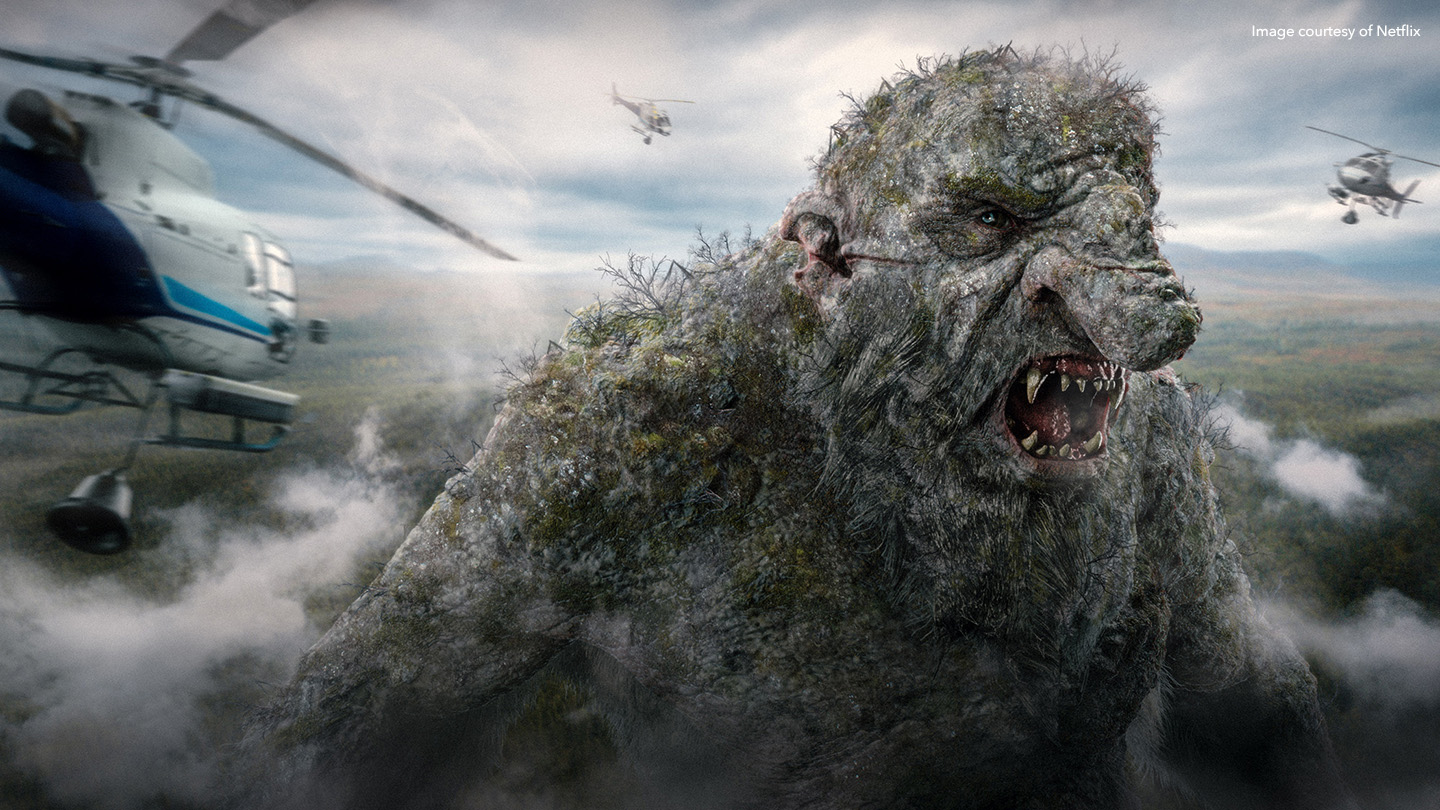
What were your main inspirations for the Nuke 16.0 artwork?
The node tree is a common theme in the compositing work I’ve done. And for me, the tree is also symbolic of the core of creativity, and that also resonates with the Tree of Life in Norse mythology. It’s a way of visualising what the tools are capable of. I took inspiration from the imaginative worlds of fantasy films. And the little ships were partly inspired by Norse lore, and the way that Foundry ships out new, optimized tools — like launching ships on an adventure.
I took inspiration from various trees, including olive and oak trees, that have beautiful qualities to them. So I had to learn new ways to create those elements on screen, like building a 3D environment base for the whole project.
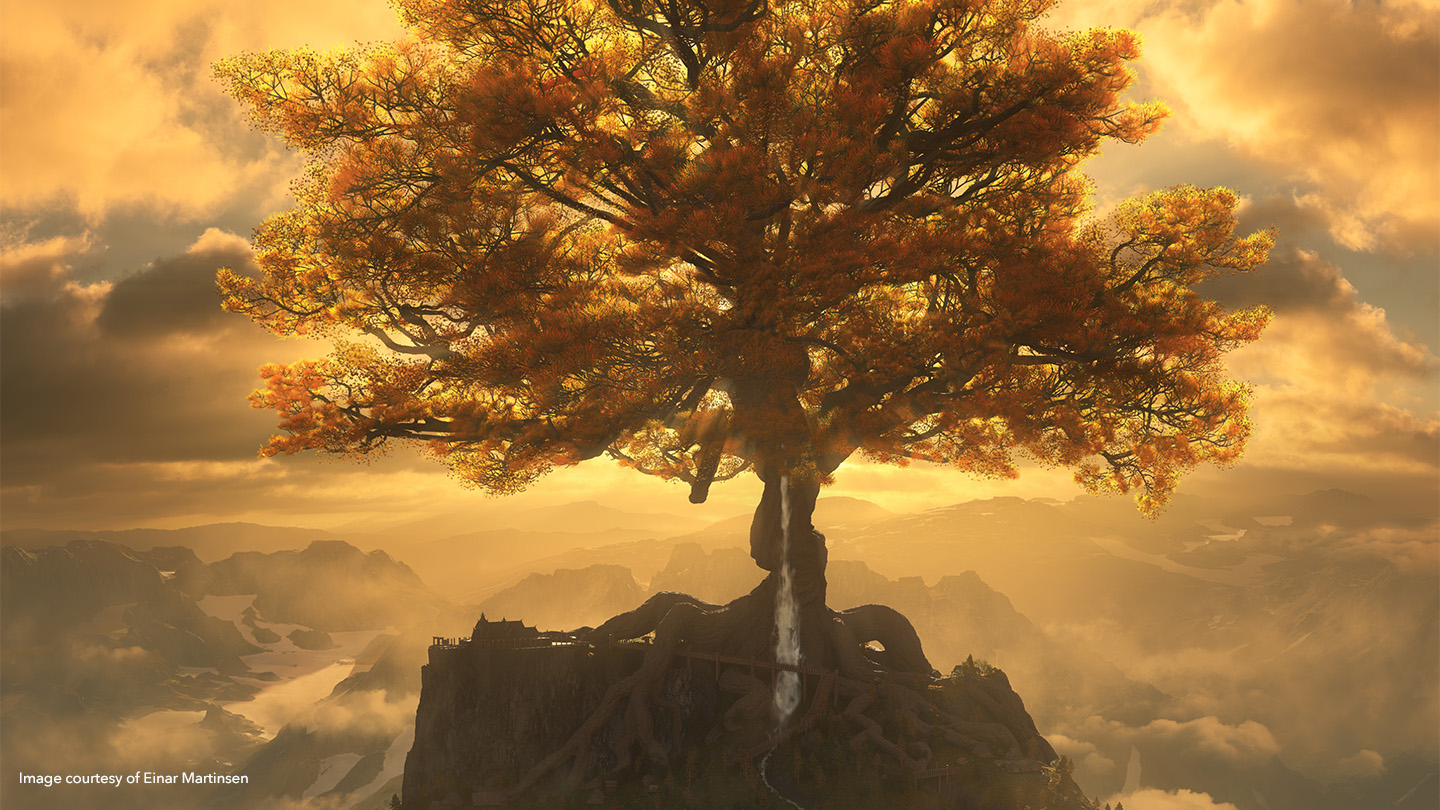
Can you tell us about your workflow on this project?
First, I had to figure out how to present many separate images for each of the different Nuke Family products and keep them unique for all the splash screens. That’s where the idea for different seasons and times of day came into play. Next, I made drawings with pen and paper to block out the various compositions. I quickly realized that I needed to build this as a massive scene so that I could accommodate all the different angles and scenarios. I used a variety of tools to build up the 3D environment, obviously using Nuke for compositing and wherever else it made sense, like creating the moving images and other effects.
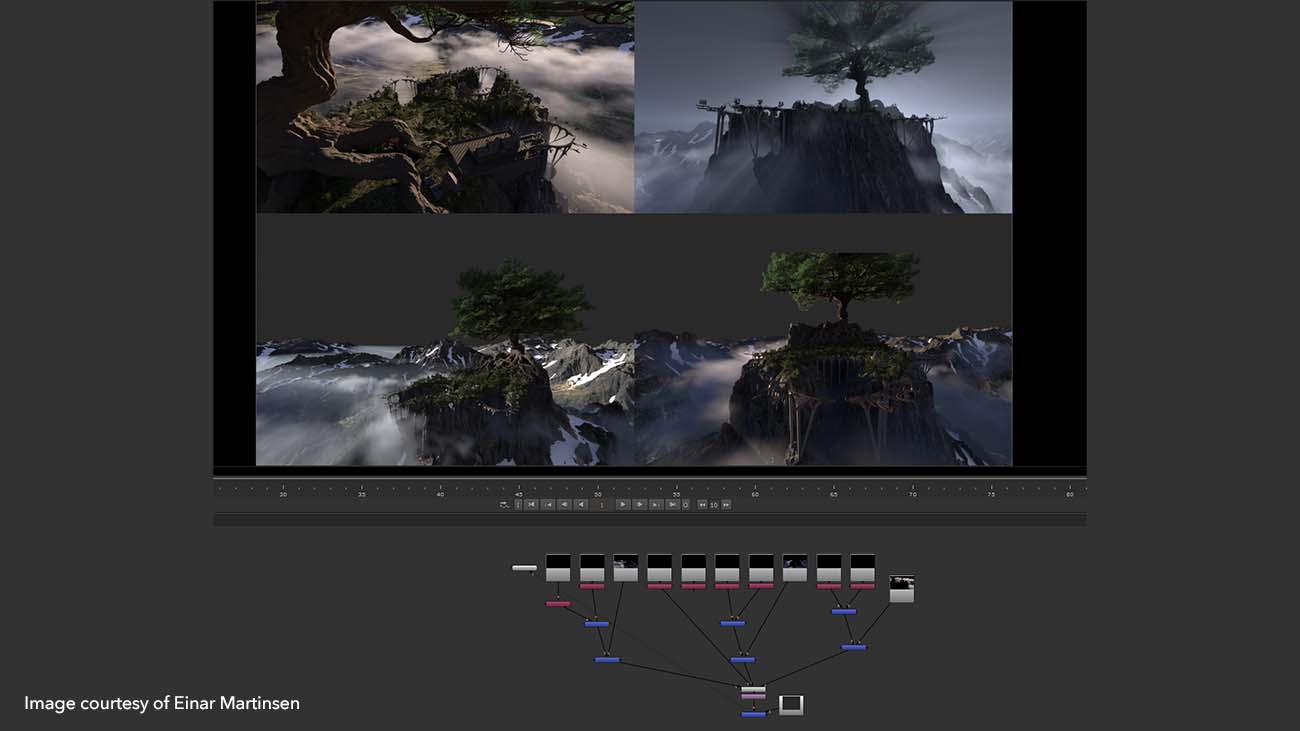
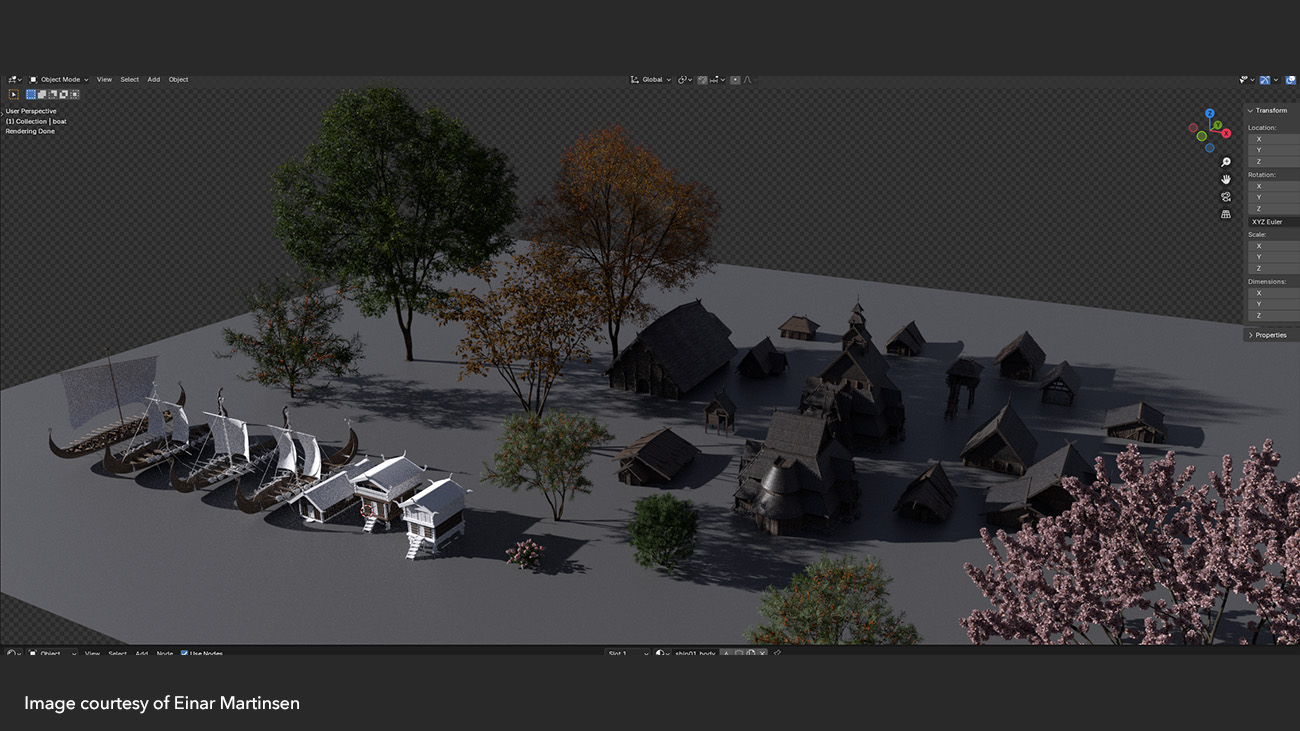
Were there any specific challenges in this project that you overcame?
It was a massive world that I was building and I had creative freedom, but that made it a big challenge. I got to push my skillset further, and by the end, I was using Nuke to enhance the shot with waterfalls and other elements. Nuke is really good at handling many different elements and keeping it all flexible in the art direction.
What features or characteristics of Nuke do you particularly like, and why?
The node-based compositing system in Nuke is something that I really enjoy. I also love how you stack up images in depth, which I did for this project. That comes from my background as a matte painter because I can visualize the space when I create. The combination of the 2.5D projection tools and the node-based compositing is unique, and then you can also move stuff into the Viewport to do the work for you. That’s why I've stuck to Nuke my whole career — it’s really efficient and good to use.
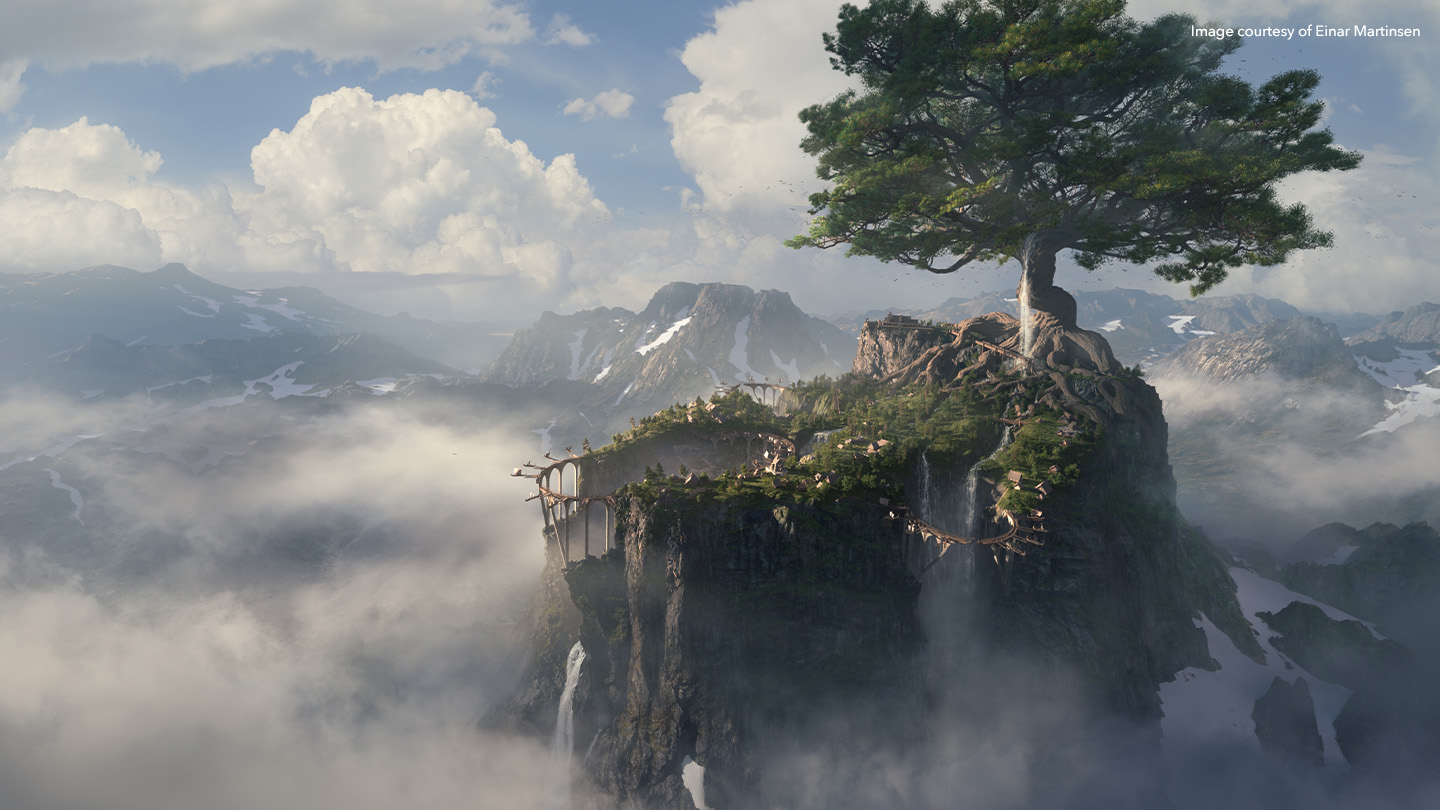
How does it feel to see your own artwork when you open up Nuke?
The first time I saw it, I wasn’t expecting it, then I saw my own artwork pop up on the loading screen! I wouldn't have believed that when I started out that I could have my own artwork as the splash screen of something like Nuke.
Is there anything you’d particularly like to work on in future?
I’m a creator and a storyteller, so I’d like to lean more into that and craft my own little world inspired by Norse mythology. To build something, maybe a TV show, that people are excited about, with maybe hundreds of people working on it in the future — that's the big goal.
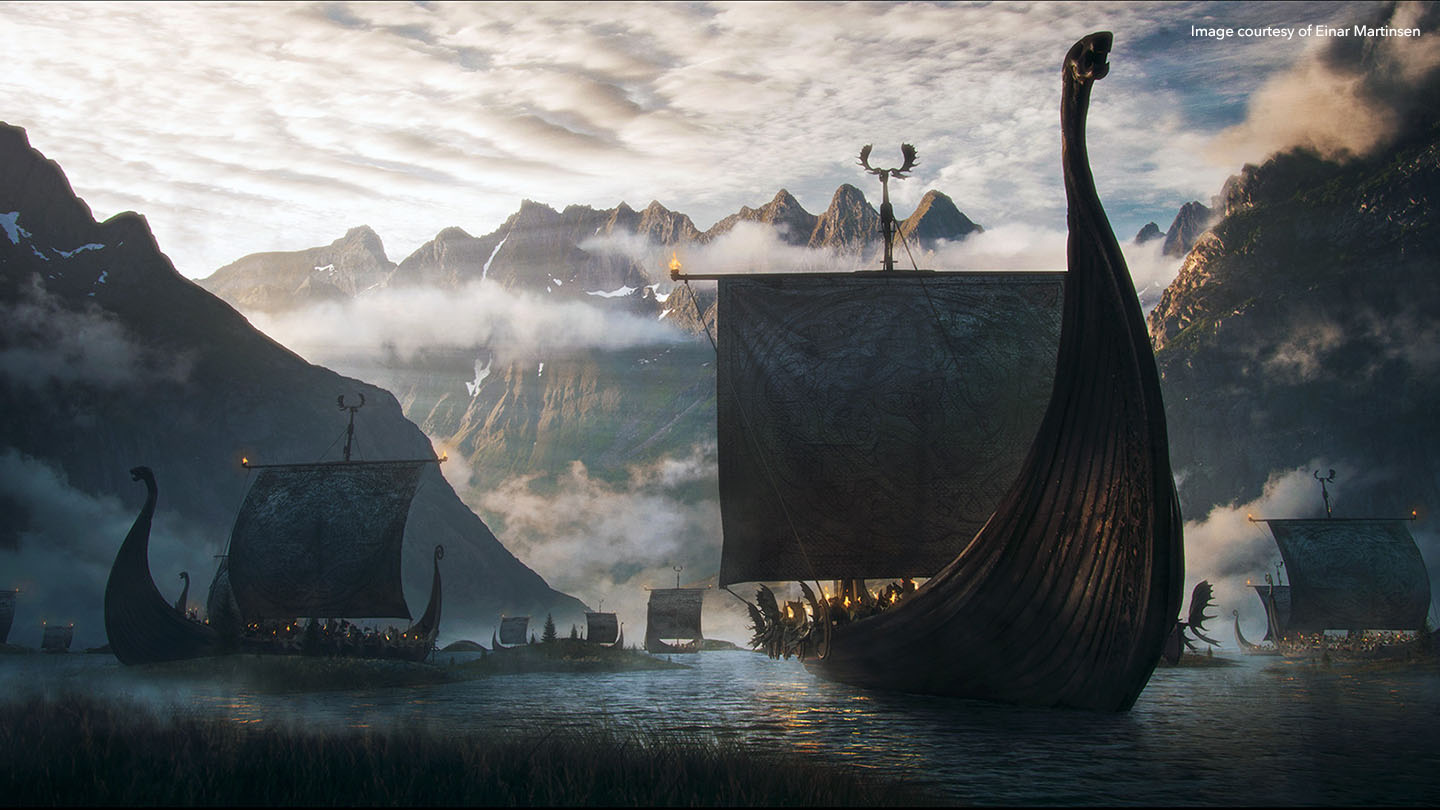
What advice would you give to people hoping to break into the VFX industry?
Everything is different from when I started out, because that's the nature of film — industries keep on moving. You've got to be really curious, and also passionate about working in film. The good thing about the visual effects industry is that there are so many roads to go down.
If you can, I would recommend going to schools or courses where you meet like-minded people. Networking and building relationships are very important for your career and also your own mental health and happiness.
I would also recommend learning everything you can, using YouTube or free software to see what sort of stuff you like. It’s always going to help if you’re a bit of a generalist to begin with, and then you can specialize later. And don’t just do something for money, or because you heard someone else doing it. I would choose interest and passion over anything.
Check out more of Einar’s work on einarmartinsen.com and Instagram.
Explore our library of Foundry Learn tutorials to help you get more out of Nuke. Just starting out? Check out Nuke Non-commercial, which enables you to learn at your own pace, for free. And if you’re a student, head over to our Education page.
